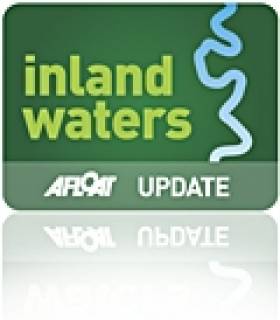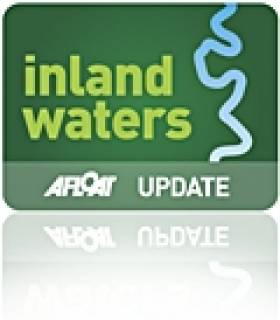Displaying items by tag: Tarmonbarry
Waterways Ireland advises all masters of vessels on and users of the Shannon Navigation that the lifting bridge at Tarmonbarry in Co Roscommon will remain closed until at least Thursday 18 April to facilitate essential maintenance works.
Works at Tarmonbarry were previously extended twice since beginning in early February, and a diversion route is available via the Camlin River.
The cross-border body for Ireland’s inland waterways says it regrets any inconvenience that this may cause and thanks its customers for their cooperation.
This story was updated on Wednesday 3 April to include the latest information.
Shannon Navigation: Diving Operations at Tarmonbarry Weir
Waterways Ireland advises masters of vessels on and users of the Shannon Navigation that diving operations will be taking place at Tarmonbarry Wier from Monday 25 September for a period of approximately one week.
Alpha Flag (Divers Flag) will be flown to indicate the presence of divers in the water. The cross-border body for Ireland’s inland waterways asks masters of vessels to please proceed with additional caution in the area.
Waterways Ireland advises all masters of vessels and water users on the Shannon Navigation that Tarmonbarry Bridge and Lock in Co Longford will be closed from Tuesday 10 to Friday 13 May for further emergency repair works.
An alternative route via the Camlin River is available. Masters of vessels and water users are advised to check their airdraft prior to undertaking the passage on this inland waterway due to the low bridge on the N5 road.
Update 11/5: Waterways Ireland says Tarmonbarry Bridge and Lock have now been reopened to navigation. Essential maintenance works are continuing at Tarmonbarry Bridge and some minor delays may be experienced.
Waterways Ireland has launched a request for tender for the development of a visitor and tourism plan for the Clondra/Richmond Harbour and Tarmonbarry area at the western end of the Royal Canal.
According to the RFT, the intended plan “will chart and identify the recreational and tourism interventions required to boost tourism, recreation and economic regeneration in the area”.
Among its objectives are “to take an integrated development approach to conserve, develop and promote [the area] as a significant recreation/tourism destination in the centre of Ireland”, and “to set out a clear, realistic and achievable tourism vision…over a 10-year period”.
In addition, any plan “must be compatible with the environmental designation and zoning” of the localities covered on this part of the inland waterway.
A particular focus for Waterways Ireland will be to “protect and restore one of our heritage assets” — namely the old lock keeper’s house at Lock 46, which dates from the early 19th century.
The deadline for receipt of tender applications is 3pm on Thursday 13 January 2022. More details can be found on the eTenders website HERE.
Shannon Navigation – Tarmonbarry Lock
The re-opening of Tarmonbarry Lock on the Shannon Navigation has been extended until Wed 1 Apr 2015. Further information may be had by contacting Waterways Ireland's Carrick-on-Shannon office at 07196-50563 or the lockkeeper at 087-9222020.
Tarmombarry Lock Gate Work Completed
Waterways Ireland advises the Lock Gate maintenance at Tarmombarry on the Shannon Navigation has been completed.
























